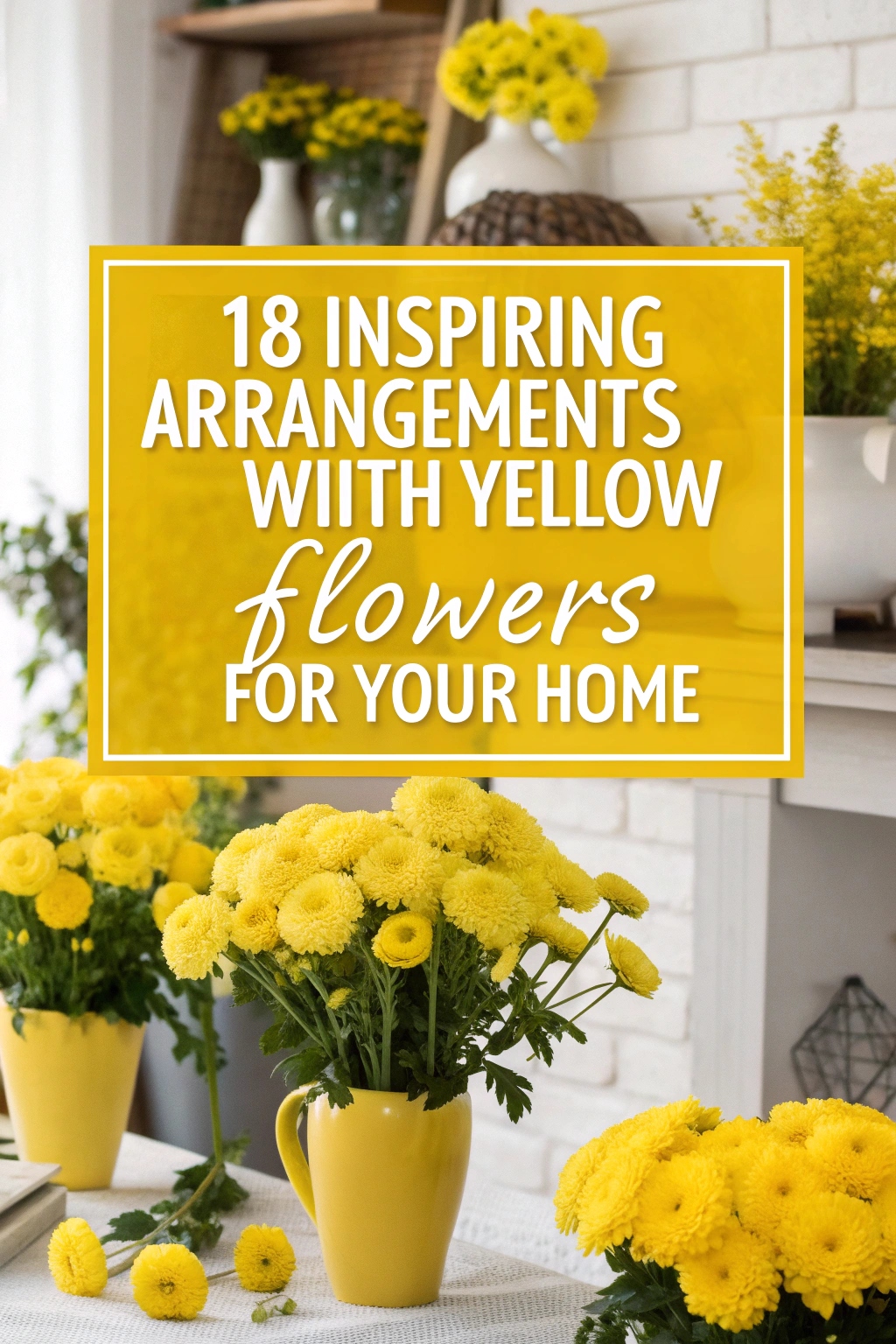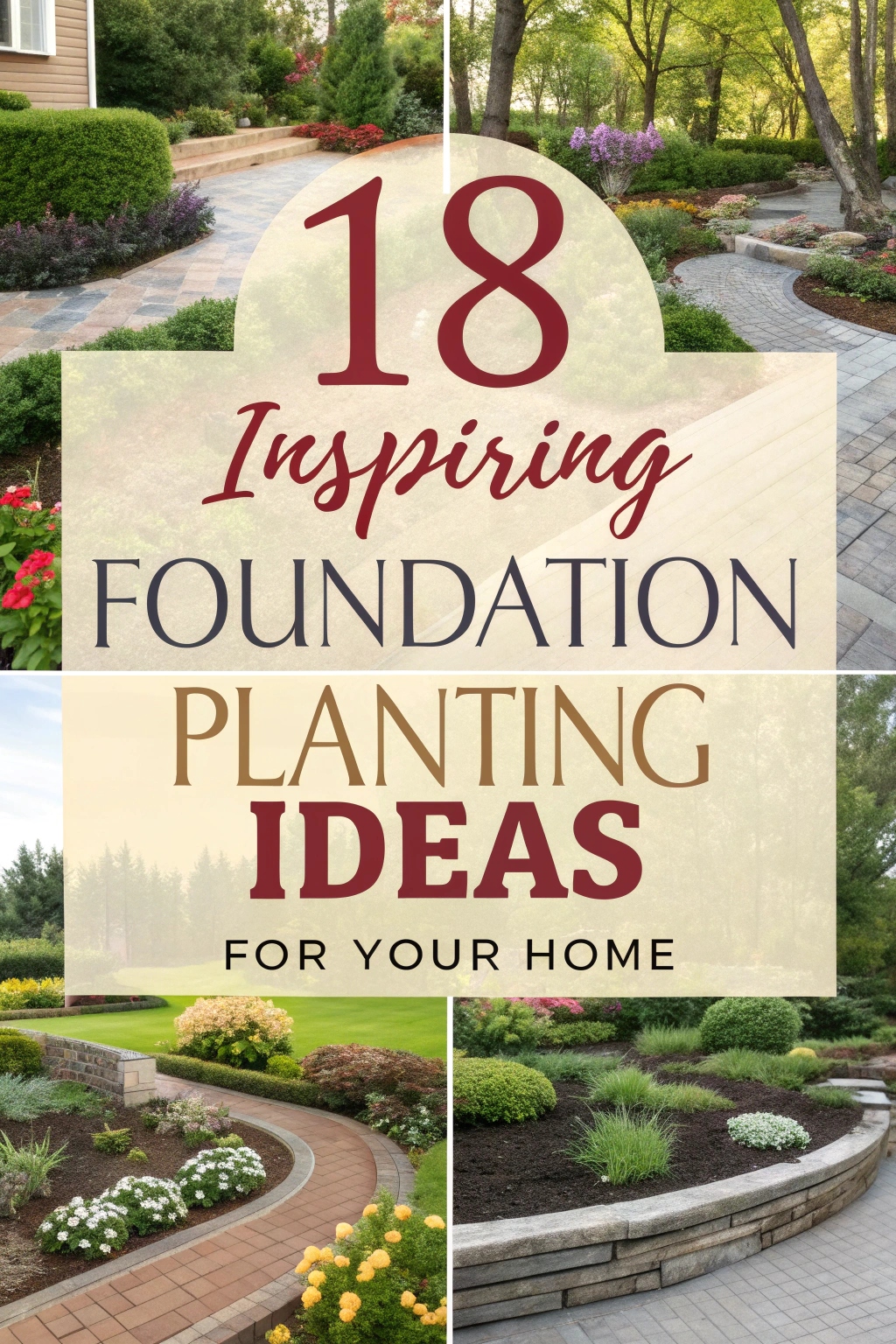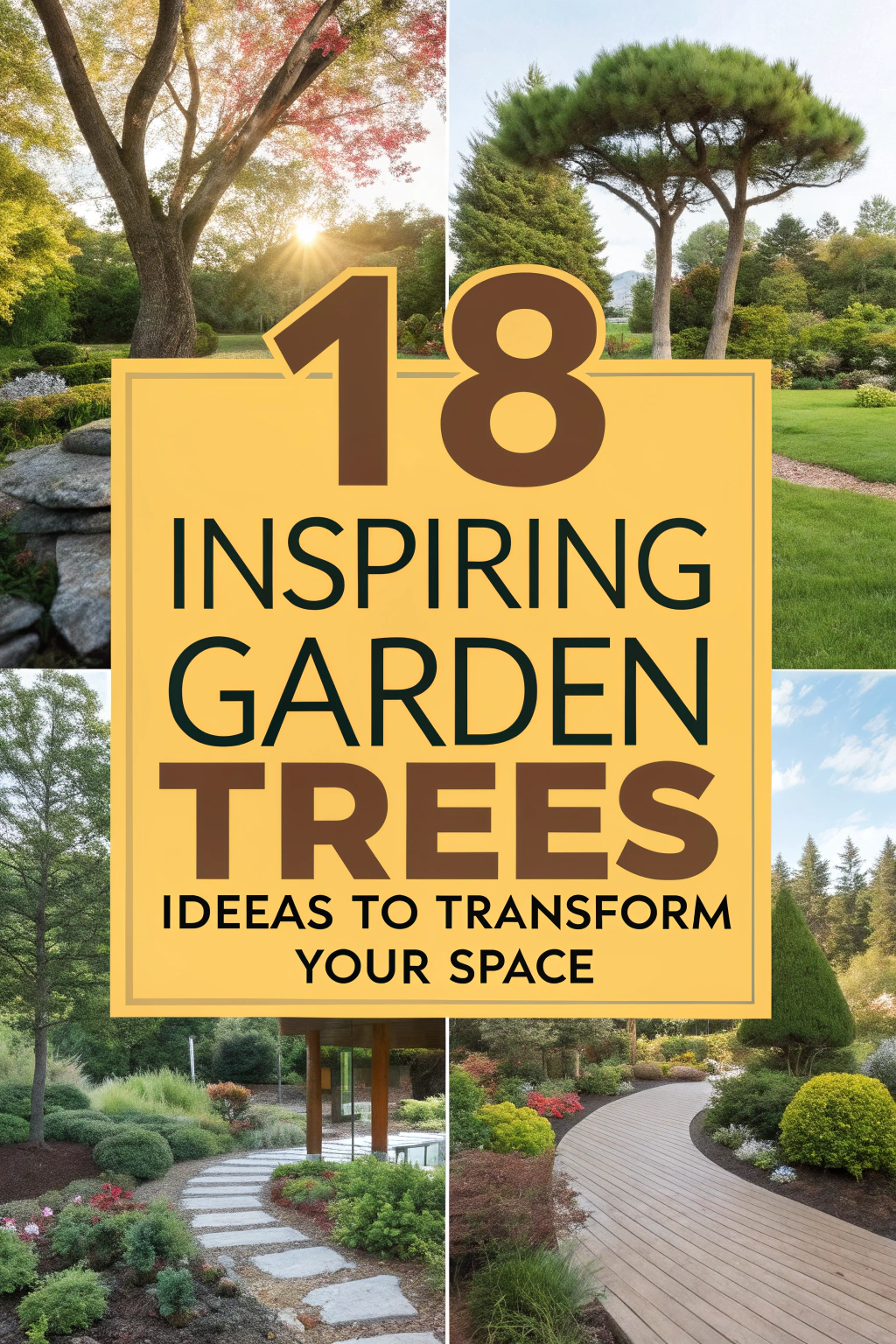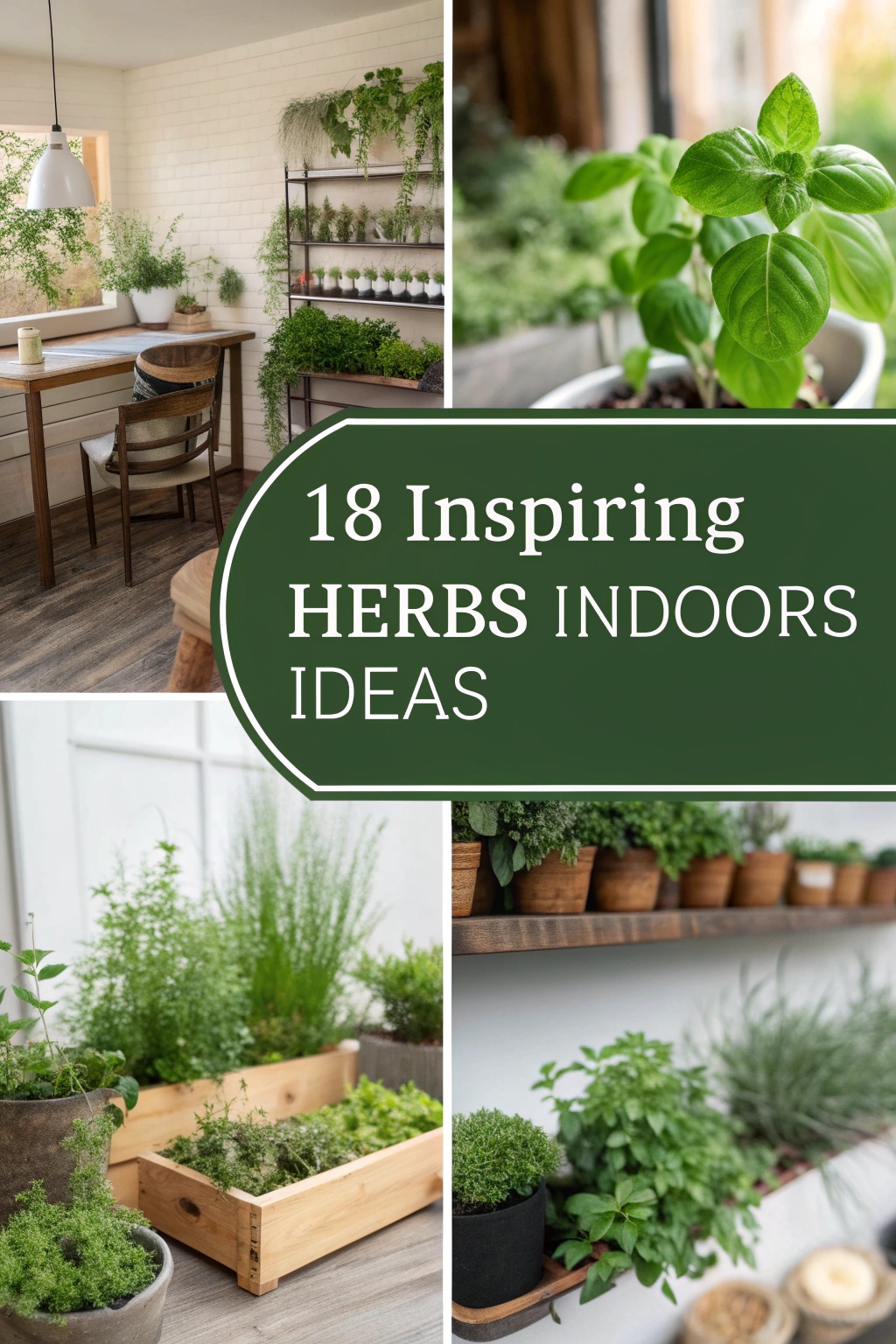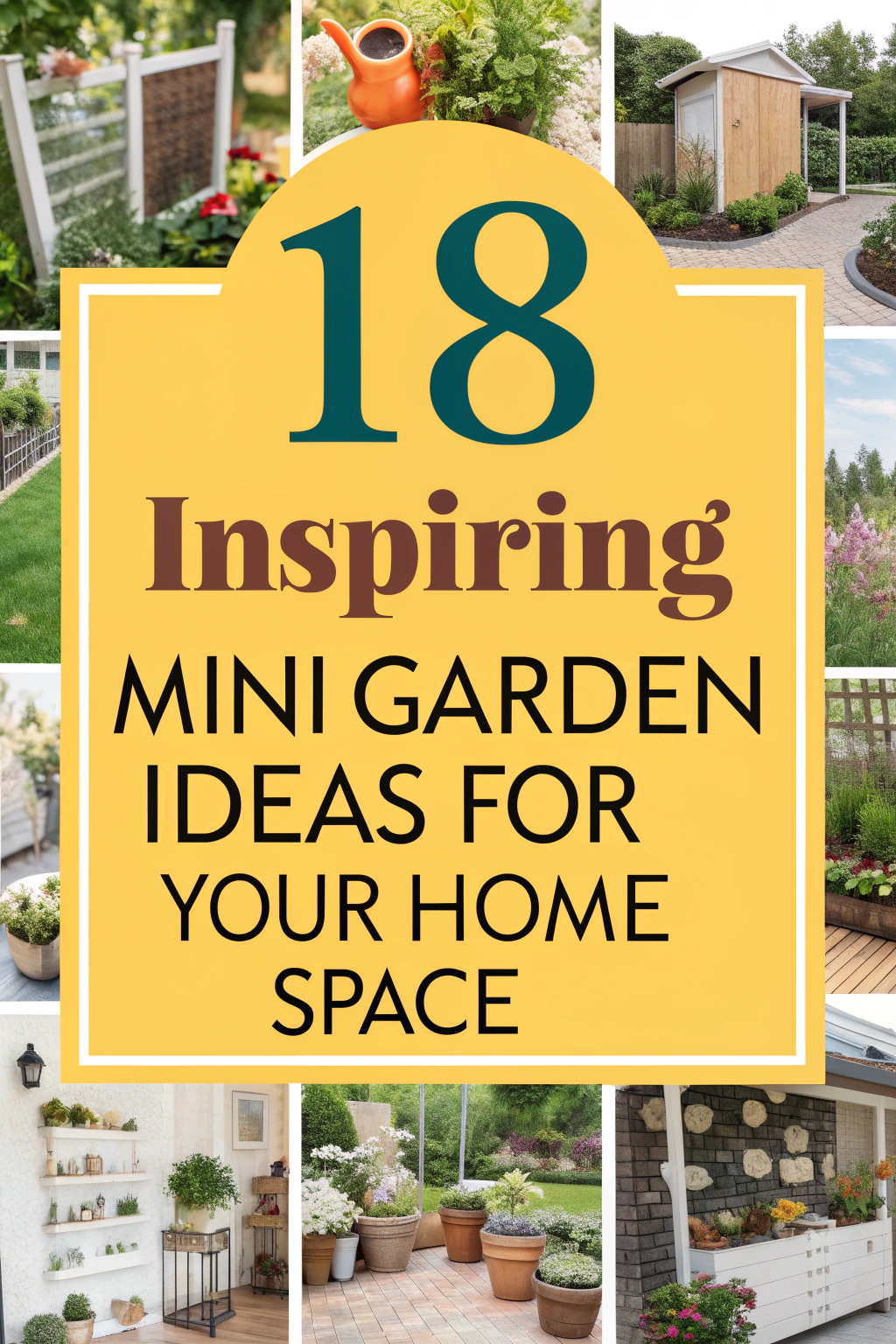17 Inspiring Ideas for Your Edible Garden Journey
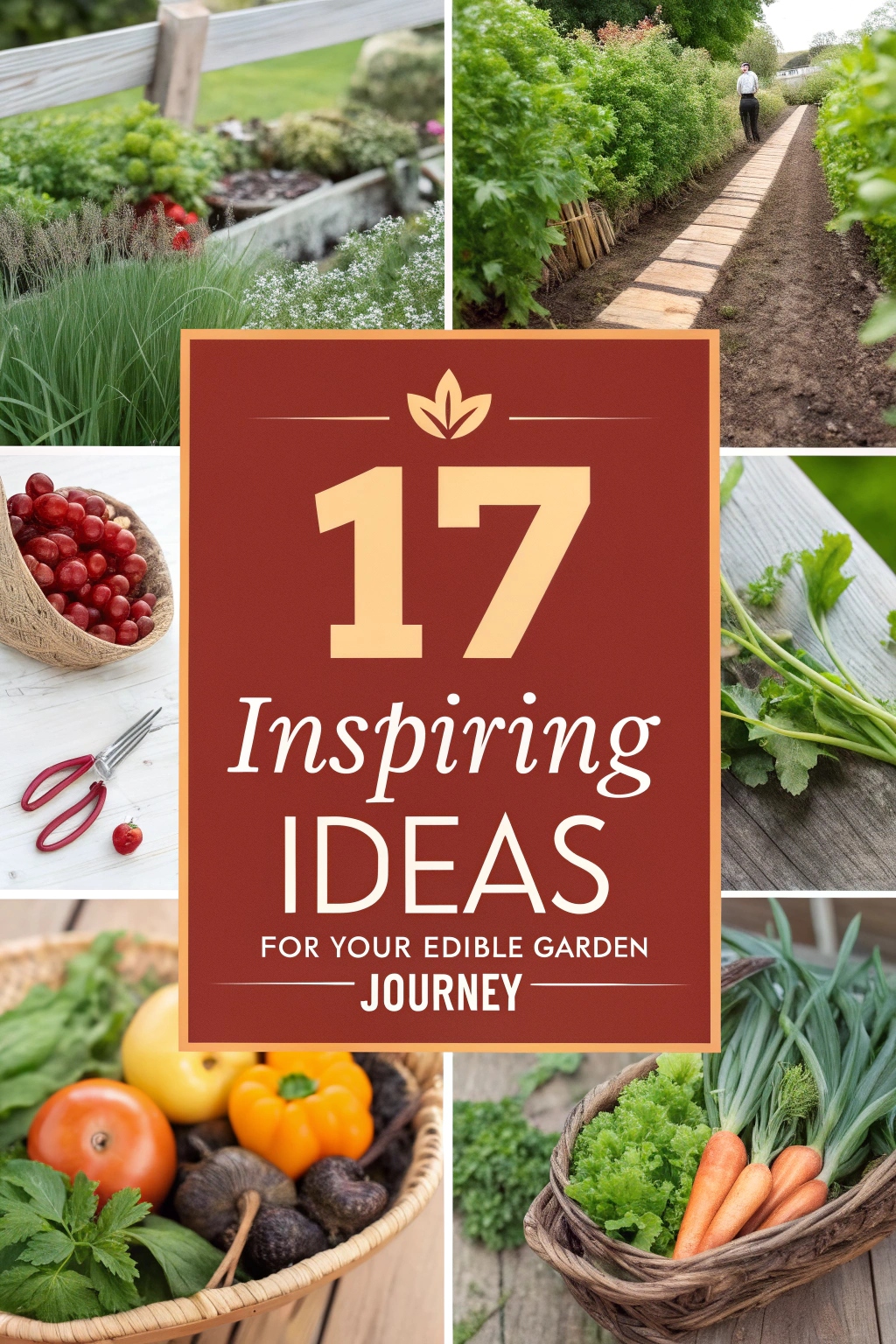
Thinking about starting your own edible garden? It’s a fulfilling venture that not only enhances your culinary skills but also beautifies your surroundings. By choosing the right location and employing strategies like container gardening and vertical gardening, you can maximize your space efficiently. Combine these techniques with companion planting and crop rotation for a thriving ecosystem. Ready to explore how you can create the perfect edible garden? Let’s plunge into some practical ideas.
Choose the Right Location
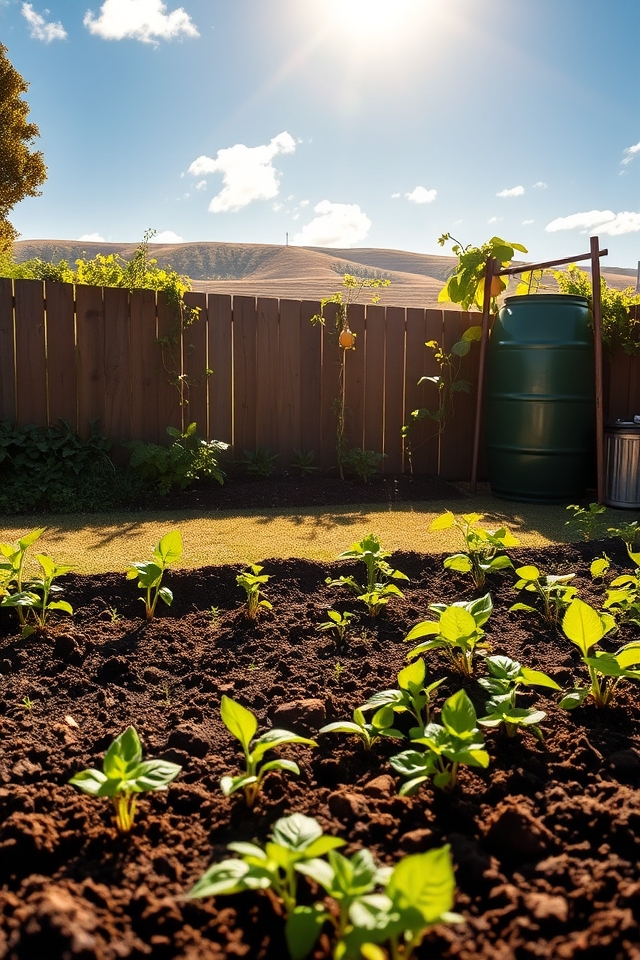
Choosing the right location for your edible garden is essential for successful growth. Look for a spot that receives at least 6-8 hours of sunlight daily, as most vegetables thrive in bright light. Make certain the area has well-drained soil to prevent waterlogging, which can damage roots. Proximity to a water source is also beneficial for ease of irrigation. Consider the climate and wind exposure to protect your plants from harsh conditions.
Start With Container Gardening
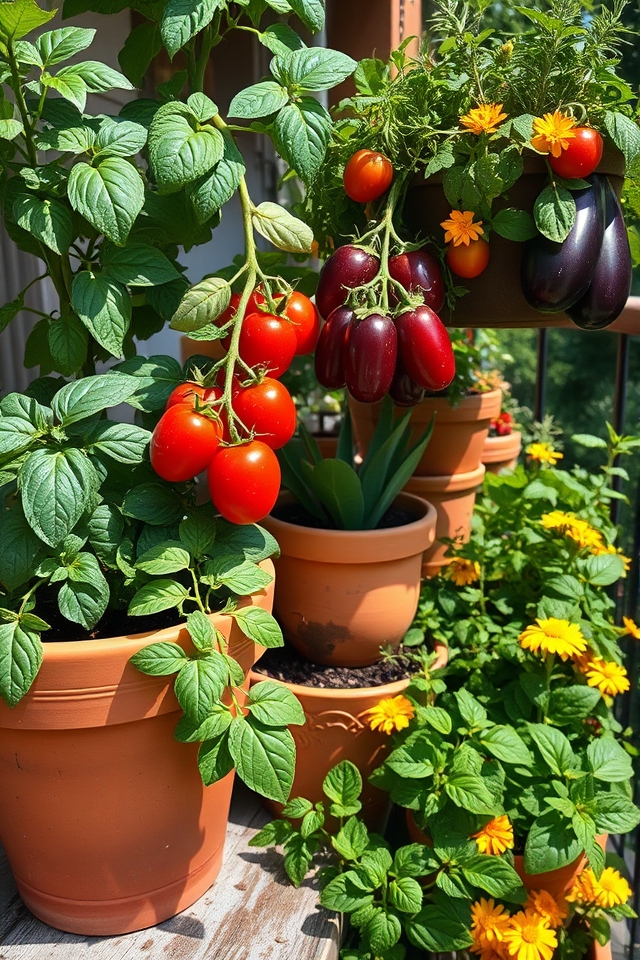
Container gardening is an ideal way to begin your edible garden, especially if you’re short on space. Utilizing pots, boxes, or hanging planters, you can grow a variety of herbs, vegetables, and fruits on patios, balconies, or even windowsills. This method allows for easy customization, mobility, and control over soil quality. Begin with easy-to-grow plants like tomatoes, lettuce, or basil, and watch your garden flourish, providing fresh produce right at your fingertips.
Use Vertical Gardening Techniques
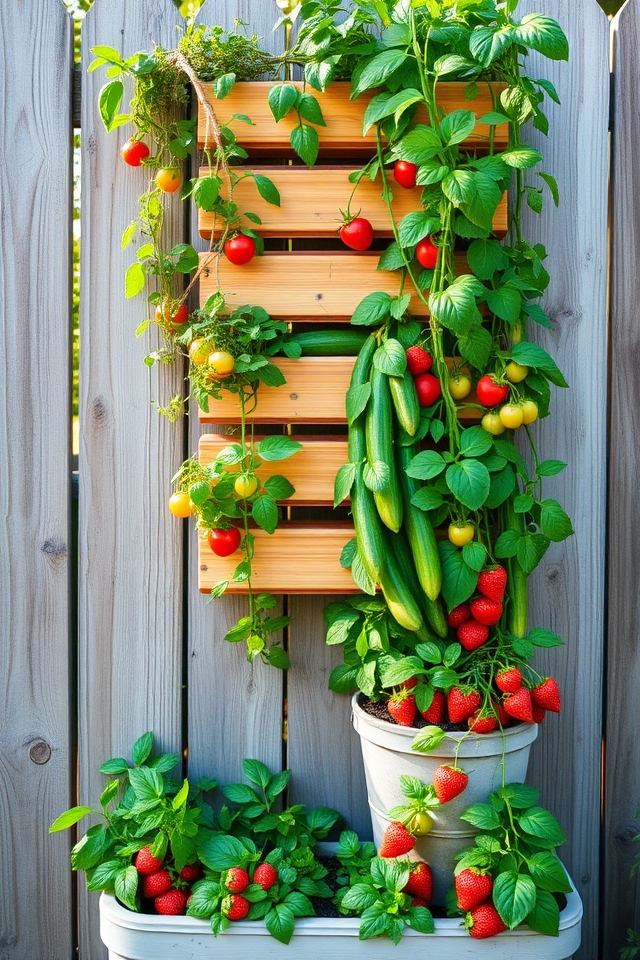
Vertical gardening techniques are an excellent way to maximize space while growing an edible garden. By utilizing wall-mounted planters, trellises, or stackable containers, you can cultivate a variety of vegetables, herbs, and fruits in limited areas. This method not only enhances accessibility for harvesting but also improves air circulation and sunlight exposure for the plants. Additionally, vertical gardens can add a visually appealing element to your outdoor space, making gardening both practical and beautiful.
Create a Raised Bed Garden
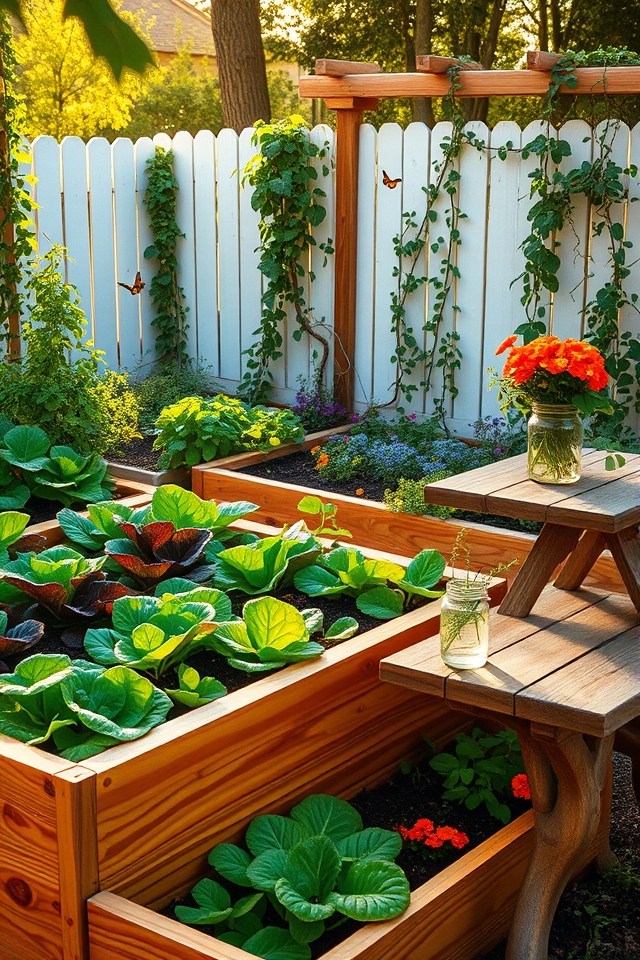
Creating a raised bed garden is an excellent way to grow your own edible plants while enhancing your outdoor space. These elevated structures, typically made of wood, brick, or stone, improve drainage and soil quality, making gardening easier and more productive. You can customize the size and layout to fit your yard or patio. Plus, the added height reduces strain on your back when tending to your plants. Fill it with nutrient-rich soil and plant your favorite vegetables, herbs, and flowers for a fruitful harvest!
Incorporate Companion Planting
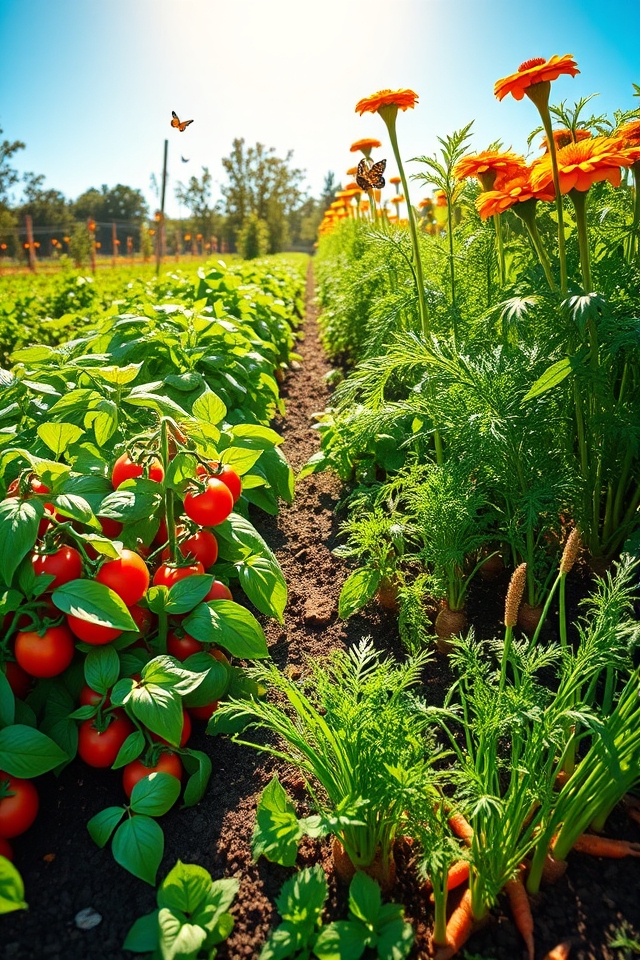
Incorporating companion planting into your edible garden can enhance growth, deter pests, and improve flavor. By strategically placing plants that benefit each other, such as tomatoes with basil or carrots alongside onions, you can create a more vibrant garden ecosystem. These pairings can help to naturally repel insects, promote pollination, and maximize space, resulting in a healthier yield. Embrace this holistic approach for a thriving edible garden!
Experiment With Hydroponics
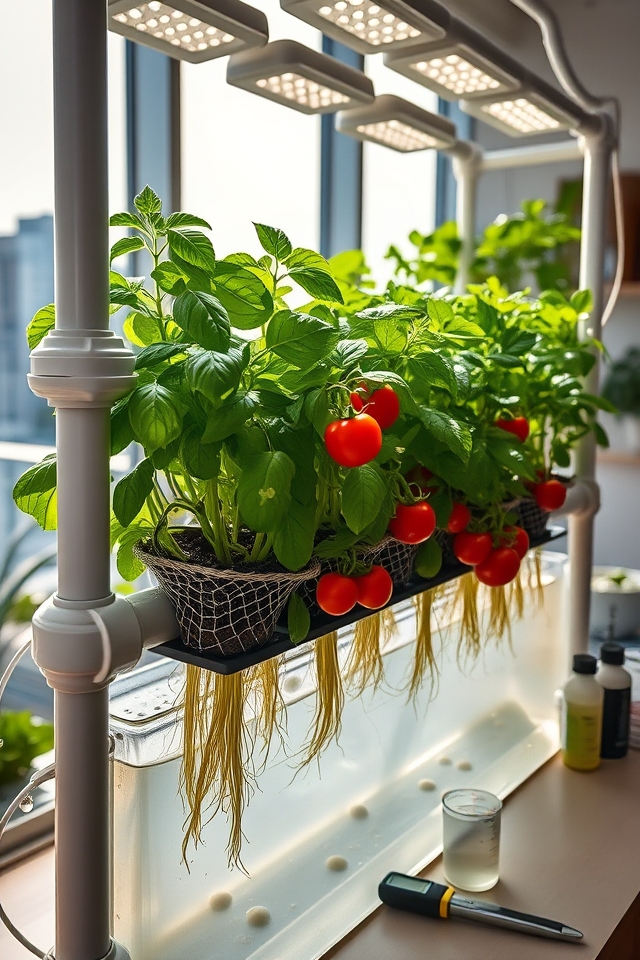
Experimenting with hydroponics offers an innovative way to grow your edible garden without soil. This soil-free cultivation method relies on nutrient-rich water solutions to nourish plants, making it possible to grow fresh herbs, vegetables, and even fruits indoors or in limited spaces. Hydroponic systems can be tailored to fit various environments, providing efficient growth cycles and conserving water. Embrace this modern gardening technique to enjoy healthy, homegrown produce all year round!
Plant Seasonal Vegetables
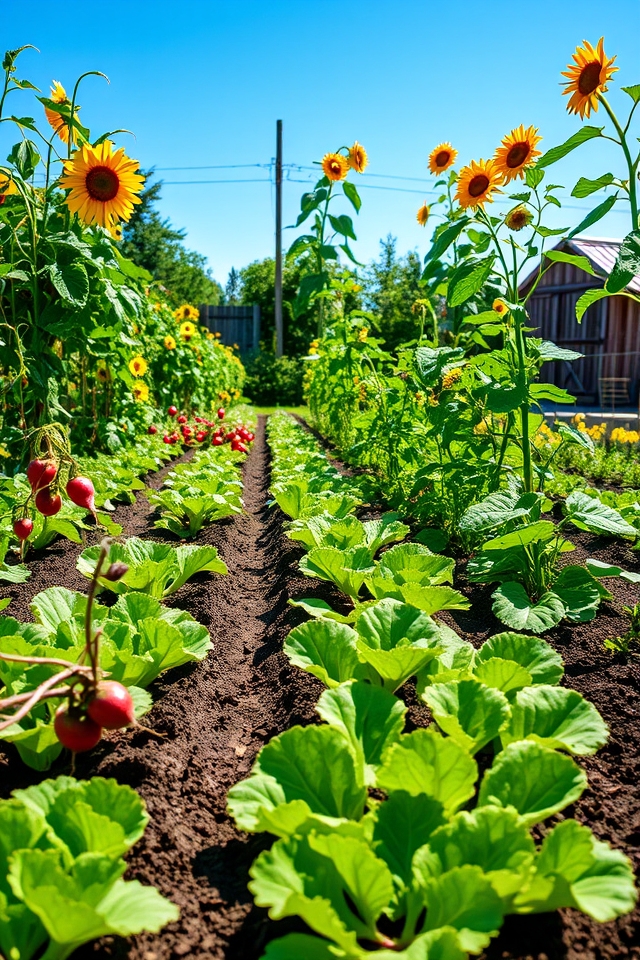
Planting seasonal vegetables is a rewarding way to create a thriving edible garden. By choosing crops that thrive in your region’s climate, you can maximize yield and flavor. In the spring, consider planting lettuce, peas, and radishes, while summer calls for tomatoes, peppers, and zucchini. As autumn approaches, root vegetables like carrots and beets can be sown. Rotate your crops seasonally to maintain soil health and enjoy a bountiful harvest year-round!
Grow Herbs in Small Spaces
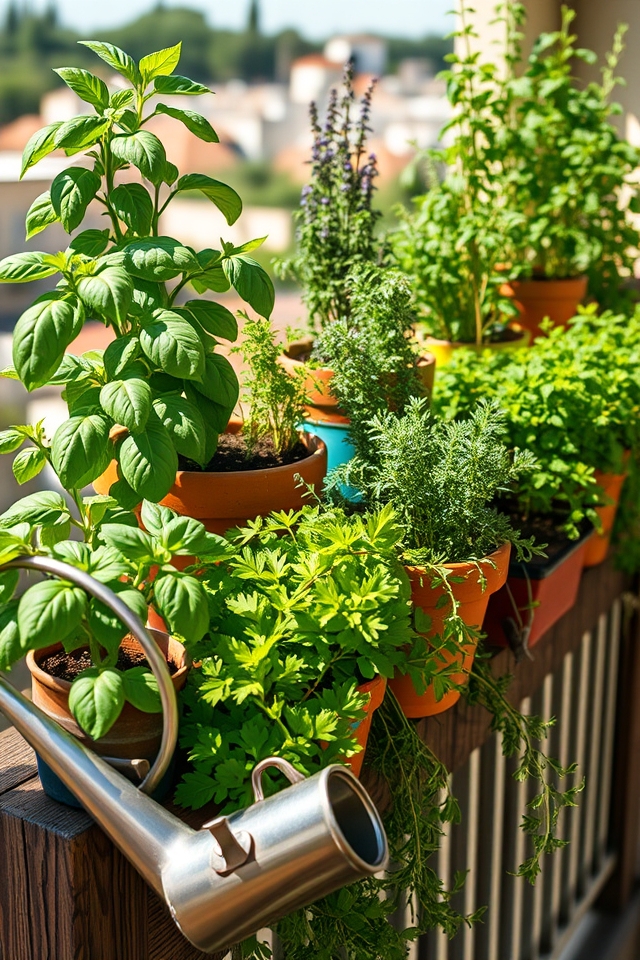
Growing herbs in small spaces is a fantastic way to add flavor to your cooking while maximizing limited areas. Containers, window boxes, and vertical planters can transform balconies or small yards into lush herb gardens. Opt for hardy varieties like basil, thyme, and parsley, which thrive in pots and can be easily accessed for daily use. Regular watering and a sunny spot will guarantee your herbs flourish, making your small space a vibrant culinary haven.
Design a Kitchen Garden
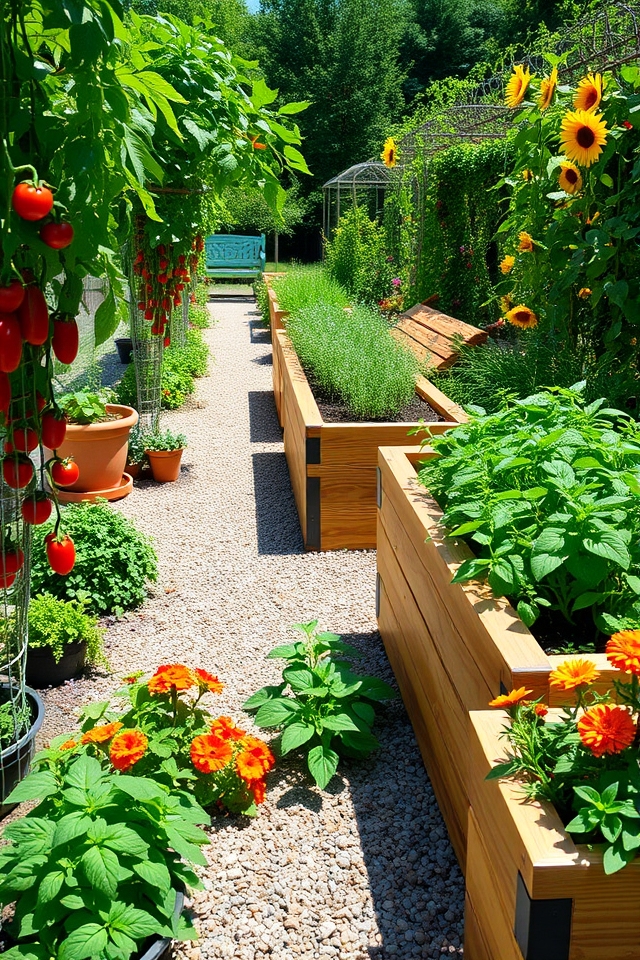
Designing a kitchen garden involves creating a functional and aesthetically pleasing space where herbs, vegetables, and edible flowers thrive. Start by selecting a sunny spot with well-draining soil. Use raised beds or containers for easier maintenance and to control soil quality. Incorporate pathways for easy access, and intersperse plants with decorative elements like pots and trellises. Consider companion planting to maximize space and yield, ensuring your kitchen garden is not only productive but also a delightful area to enjoy.
Encourage Pollinators
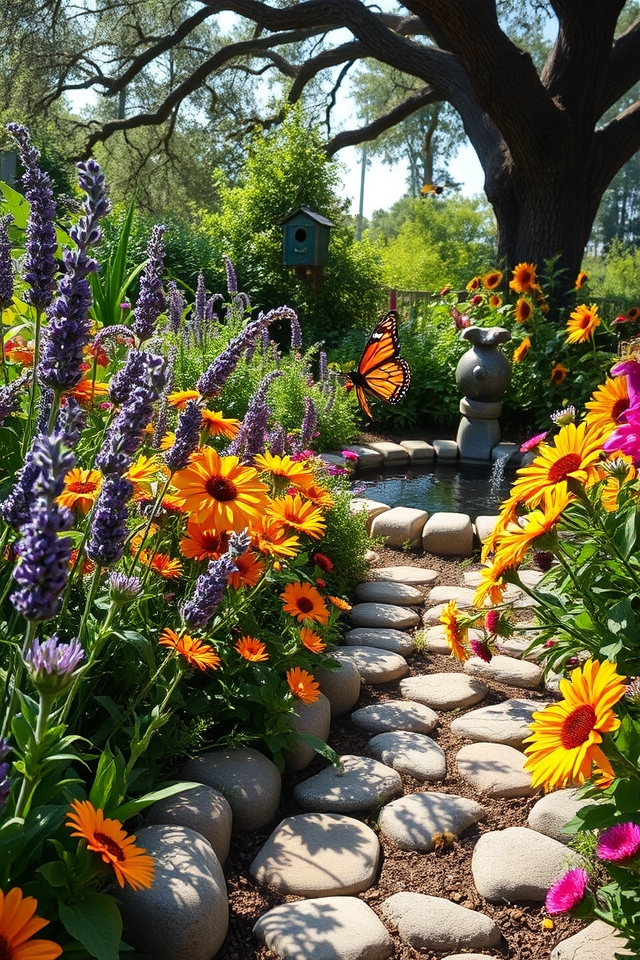
Encouraging pollinators in your edible garden is essential for enhancing biodiversity and improving the health of your plants. Incorporate a variety of flowering plants that bloom at different times to attract bees, butterflies, and other beneficial insects. Native plants are particularly effective as they provide familiar food sources for local pollinators. Avoid using pesticides and create sheltered spaces where these helpful creatures can thrive, ensuring a vibrant and productive garden ecosystem.
Use Natural Pest Control
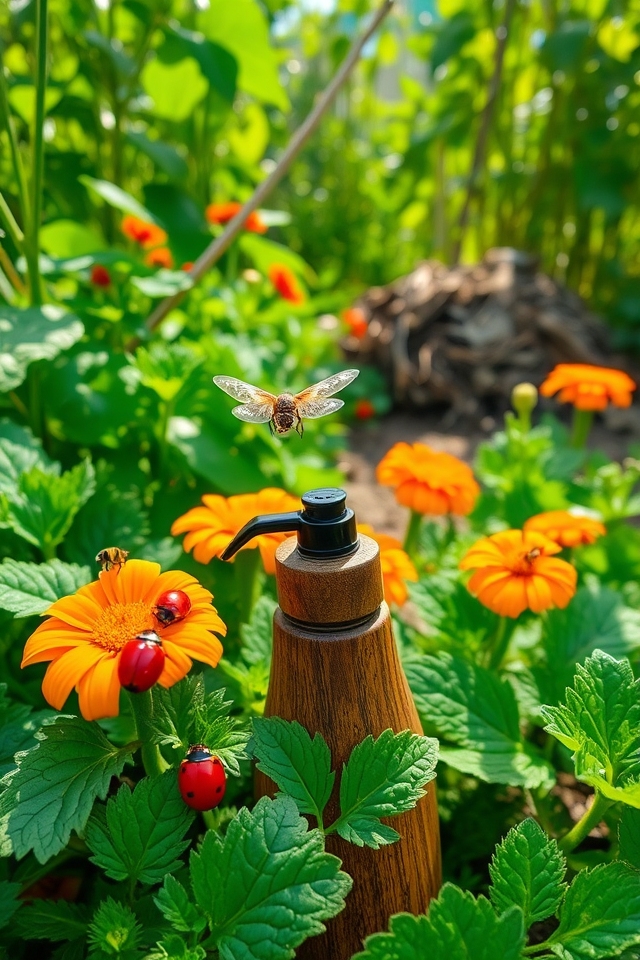
Using natural pest control methods in your edible garden is an eco-friendly way to protect your plants. Incorporate beneficial insects, like ladybugs and lacewings, which prey on harmful pests. Plant companion flowers, such as marigolds and nasturtiums, to repel unwanted insects. You can also use homemade sprays made from soap or garlic to deter pests without harming the environment. By fostering a balanced ecosystem, you’ll promote healthier plants and a more sustainable garden.
Explore Fruit Trees and Bushes
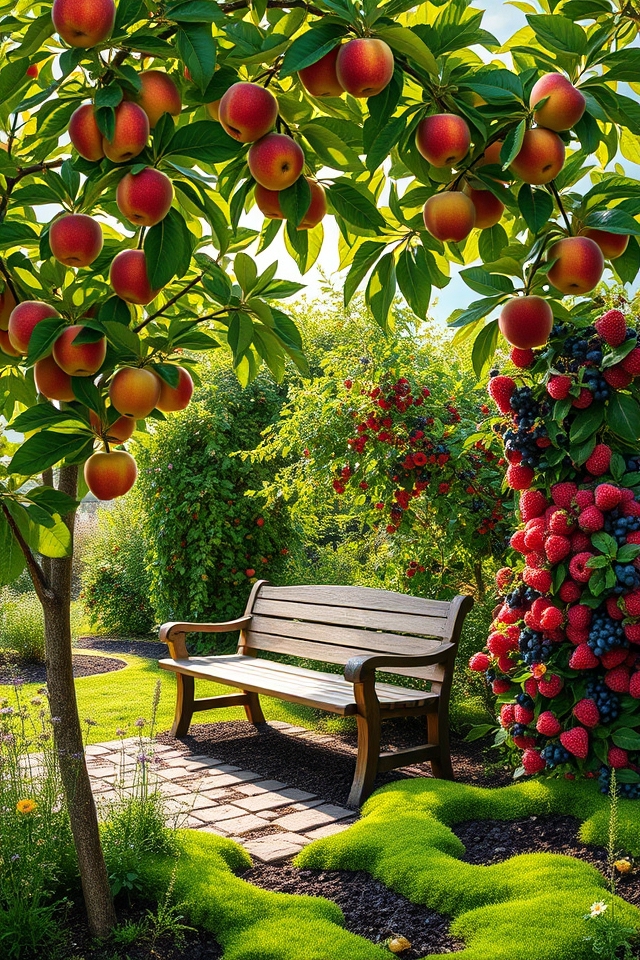
Fruit trees and bushes can transform your garden into a productive oasis. Consider planting varieties such as apple, peach, or cherry trees, which provide not only luscious fruit but also beautiful blossoms in spring. Berry bushes like blueberries, raspberries, and blackberries add vibrant color and sweet treats to your garden. These plants not only yield edible rewards but also support local wildlife, making your garden a sustainable and enjoyable space year-round.
Create a Herb Spiral
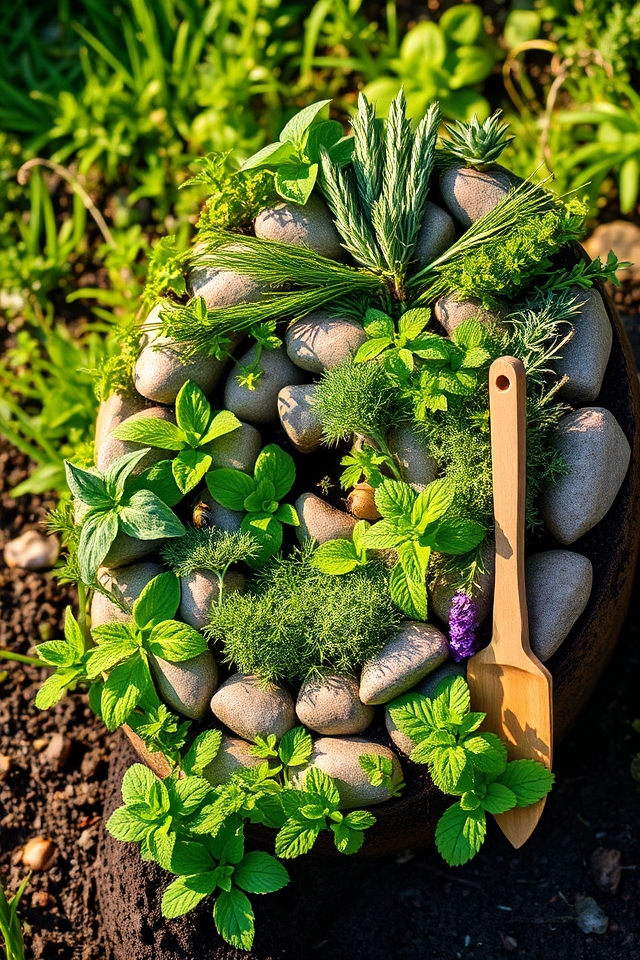
A herb spiral is an innovative and space-efficient gardening method that combines vertical and horizontal growing. Constructed in a spiral shape, this design maximizes exposure to sunlight and rain while creating unique microclimates suitable for various herbs. The high point of the spiral retains moisture, accommodating plants that prefer wetter conditions, while the lower areas provide drier spots. This not only enhances biodiversity but also makes harvesting a delightful experience, allowing easy access to fresh herbs right from your garden.
Implement Crop Rotation
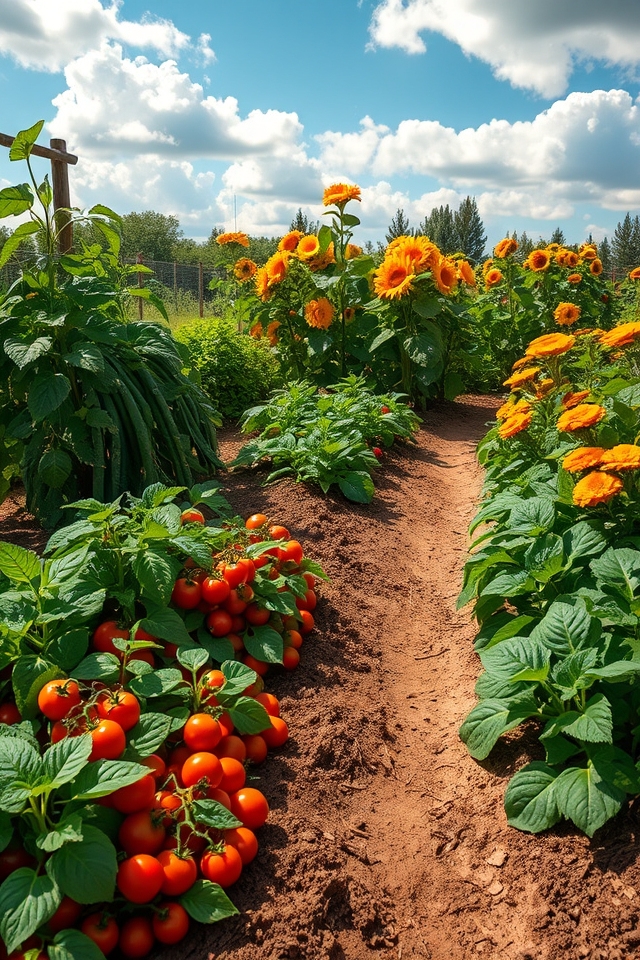
Implementing crop rotation in your edible garden is a strategic way to maintain soil health and enhance plant growth. By alternating the types of vegetables planted in specific areas each season, you can prevent soil nutrient depletion, reduce pest and disease buildup, and improve biodiversity. For example, follow heavy feeders like tomatoes with nitrogen-fixing plants such as beans. This practice not only optimizes yields but also creates a sustainable ecosystem within your garden.
Utilize Edible Flowers
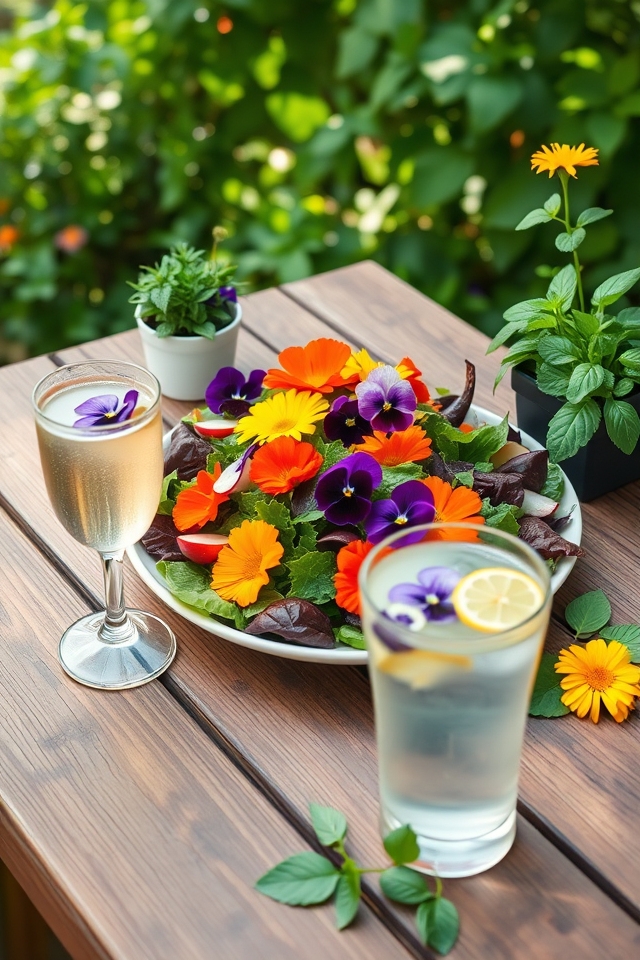
Edible flowers are a delightful way to enhance both the aesthetics and flavor of your garden. Varieties like nasturtiums, pansies, and calendulas not only add vibrant colors but also offer unique tastes and nutritional benefits. Use these blossoms in salads, desserts, or as garnishes for drinks. Be sure to source them from a pesticide-free environment to guarantee they are safe for consumption. Incorporating edible flowers into your garden can elevate your culinary creations and provide a feast for the eyes.
Start a Compost Bin
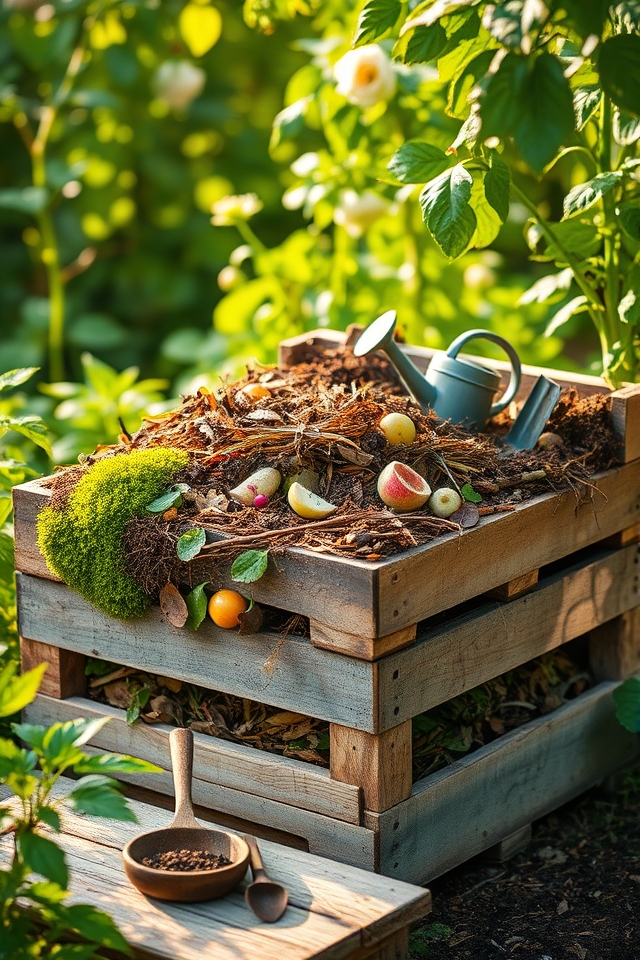
Starting a compost bin is a fantastic way to enrich your edible garden soil while reducing waste. Simply designate a container or a corner of your yard for organic materials like fruit scraps, vegetable peels, eggshells, and yard trimmings. Layering greens (nitrogen-rich) and browns (carbon-rich) will help speed up decomposition. In a few months, you’ll have nutrient-rich compost to enhance your garden’s health, promoting robust plant growth and reducing the need for chemical fertilizers. It’s eco-friendly and rewarding!
Plan for Year-Round Harvests
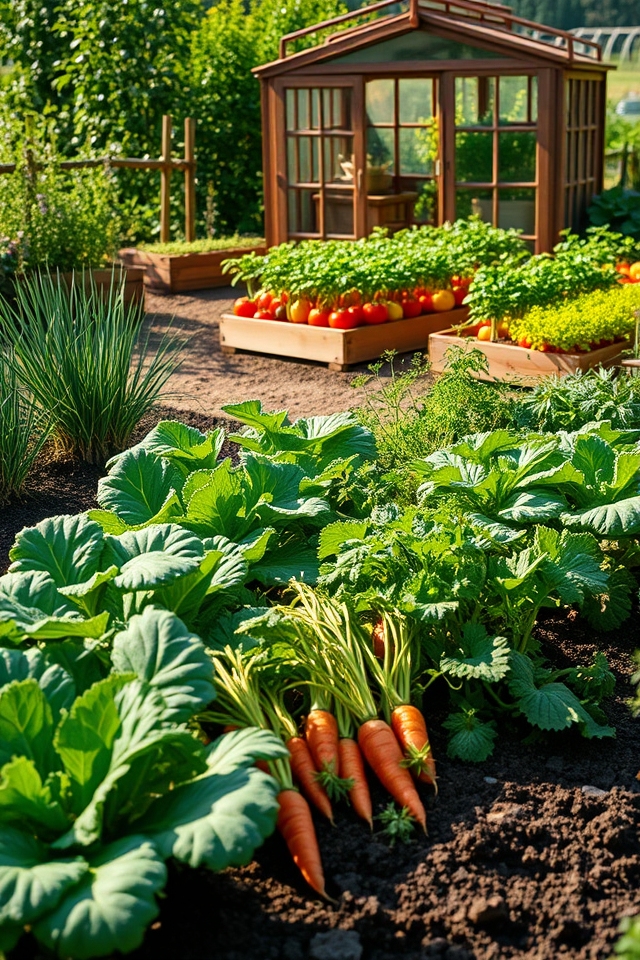
To enjoy a bountiful edible garden year-round, plan your planting around seasonal crops. Implement a rotation of cool-season vegetables like kale and carrots in the fall and winter, followed by warm-season crops such as tomatoes and peppers in spring and summer. Additionally, consider using cold frames or greenhouses for warmth and protection during colder months, while incorporating perennials like chives and rhubarb for continuous harvests. This approach guarantees a diverse array of fresh produce throughout the year.
